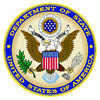| United States Embassy Tokyo, Japan |
 |
||
| Welcome to the U.S. Embassy in Tokyo. This site contains information on U.S. policy, public affairs, visas and consular services. |
|
|
||||||||||||||||||||||||||||||
|
By Kathryn McConnell
Washington File Staff Writer
Johannesburg, South Africa - The United States is building a global partnership to promote the creation and use of children's environmental health indicators, Environmental Protection Agency (EPA) Administrator Christine Todd Whitman announced September 2 at the World Summit on Sustainable Development (WSSD).
Children's environmental health indicators "are the [policy] tools that can help us understand the complex interaction between the environment and health," Whitman said. The WSSD is meeting in Johannesburg through September 4.
Indicators would report the status of children's environmental health, measure progress of interventions and help highlight areas of concern, Whitman said. "Once indicators pinpoint problems, governments can move to eliminate environmental hazards, prevent exposure and treat children's illnesses," she said.
Whitman said during the summit she wants to identify additional potential government, nongovernmental organization (NGO) and private sector partners to join the United States in furthering an alliance announced by the UN World Health Organization (WHO) earlier at the summit.
"We must raise awareness [of children's environmental health] among a wider group of leaders, Gro Brundtland, WHO director general, said joining Whitman at the September 2 event.
The U.S. initiative calls for expanding existing UN data collection to incorporate surveys of core children's environmental health indicators. After new indicators are developed, pilot studies to validate the indicators' applicability would be conducted in countries already working on children's environmental health issues, according to an EPA outline of the initiative.
Indicators must be easy and reliably measured, Brundtland said. She added that the multi-party partnership would help build nations' capacities to collect data that respond to local needs. Indicators also will provide useful data more quickly than estimates from various sources many countries now use, she said.
The initiative also calls for formation of an international task force of experts from a broad spectrum of organizations and geographic locations to coordinate the efforts of various partner organizations, the outline states.
The issue of children's health "usurps all others and brings us together. Children are our most valuable resource and the foundation on which all our countries build," Whitman said.
Respiratory infection and diarrheal diseases together claim the lives of more than 4 million children annually, she added. The majority of those illnesses, she said, are related to environmental health such as exposure to lead, dirty water and air, and a lack of sanitation, she said.
Treatment of diseases "offers only a brief respite from suffering" as children are continually exposed to poor environmental factors, the administrator said.
According to a WHO publication possible environment and exposure indicators include:
-- How many children are exposed to indoor air pollution from the use of biomass fuels and coal for cooking and heating?
-- Where do these children live and under what conditions?
-- What are the concentrations of biological contaminants in drinking water?
-- What percentage of the population has access to sufficient water to permit adequate hygiene?
The development of the indicators would begin in January 2003 and the pilot studies and publication of their findings completed by January 2007, according to the outline.
Whitman said the issue of improving children's lives "permeates many of the initiatives the United States has brought to the summit, the largest international gathering ever, according to the UN. She cited the Water for the Poor initiative announced earlier at the summit in which the United States committed up to $970 million over the next three years.
Children, who suffer "most acutely" from a lack of clean water, will be major beneficiaries of the initiative, she said.
U.S. initiatives on improving indoor air pollution and promoting clean fuels also would benefit children's health, she said.
Whitman said other partners of the children's environmental health indicators initiative include the UN Children's Fund (UNICEF), UN Environment Program (UNEP), the Organization for Economic Cooperation and Development (OECD), the North American Commission on Environmental Cooperation (NACEC), the governments of Mexico, Italy and South Africa, Physicians for Social Responsibility (PSR), the International Society of Doctors for the Environment (ISDE) and the International Research and Information Network for Children's Health, the Environment and Safety (INCHES).
![]()